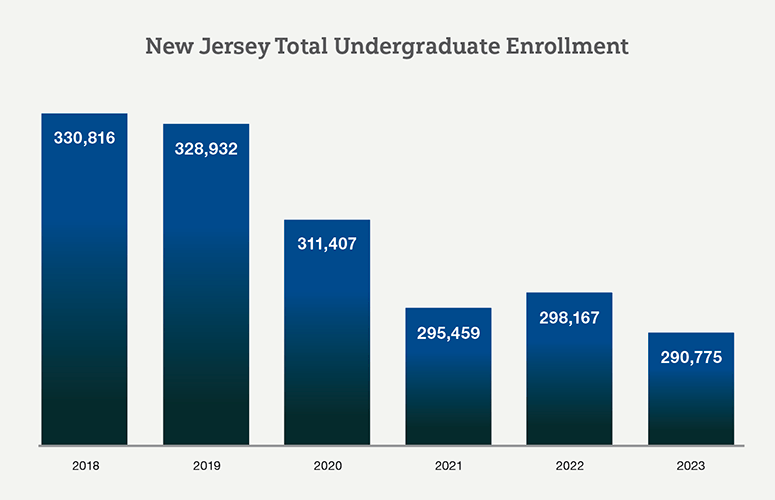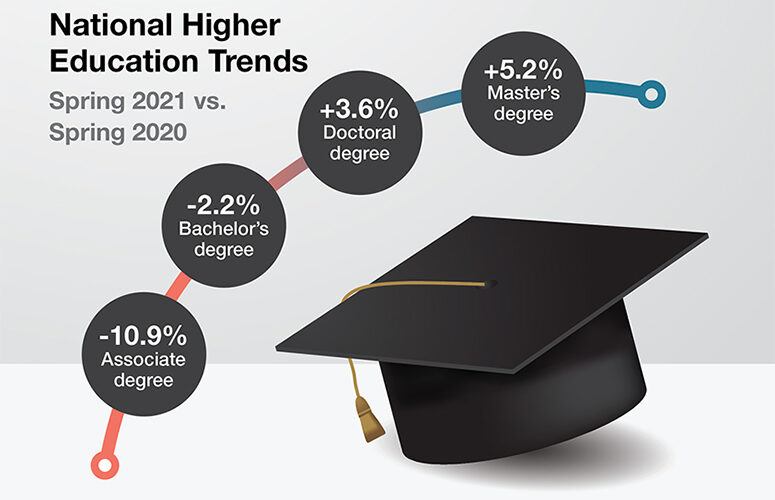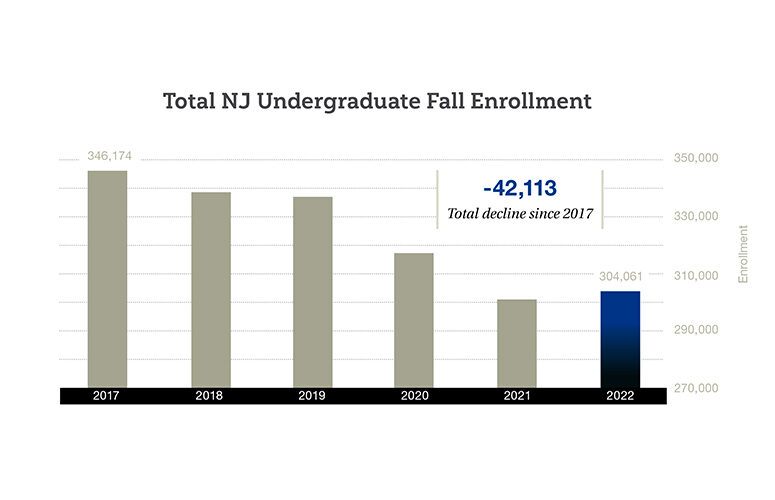
College Enrollment Increases in US, But Declines in NJ
By Kyle Sullender, Executive Director of Focus NJ On Mar 29, 2024Institutions of higher education in America finally got some reprieve from declining enrollment this fall, new data from the National Student Clearinghouse Research Center shows, but New Jersey colleges and universities won’t be celebrating.
For the first time since the emergence of the COVID-19 pandemic, national undergraduate enrollment rose year-over-year in fall 2023. Compared to fall 2022, total undergraduate enrollment rose 1.1%, community college enrollment rose 2.6%, and graduate enrollment grew by 0.6%.
Unfortunately, the Garden State was one of just 15 states to lose students during this span. Undergraduate enrollment fell 2.5%, while community college enrollment fell 4.1%. Total enrollment in the state (approximately 356,500) is nearly 10% lower than it was in 2018, according to a Focus NJ analysis of the latest figures.
The reality is that higher education enrollment has been experiencing negative trends nationwide for several years. From fall 2018 to fall 2023, total undergraduate enrollment increased in just eight states.
There is not enough room in this column to cover the diverse explanations for why students may not be seeking higher edcuation at the same rates they did a decade ago, but higher costs, strong labor markets, and declining societal attitudes toward the value of college, cover a few possible reasons.
One interesting observation from the latest data, however, is the unequal distribution of enrollment declines. For instance, national freshman enrollment has declined at a slightly slower rate than undergraduates as a whole (-5% compared to -6.5% from 2018 to 2023), and freshman enrollment has actually increased nationally for three consecutive years, including by a significant 4.6% in fall 2022.
Additionally, undergraduate enrollment among students age 20 or younger has actually increased slightly over this period by roughly 20,000 students (0.3%). While it may seem odd to highlight a growth rate of less than 1%, the figure stands in stark contrast with the nearly 13% decline among students 21 and over.
One thing made clear from these insights is that understanding whether would-be students have left education behind altogether or are utilizing noncredit and workforce training in lieu of traditional education programs will be critical for determining how to address future workforce needs and how to deliver the training necessary to fill critical occupational shortages.
To access more business news, visit NJB News Now.
Related Articles:





